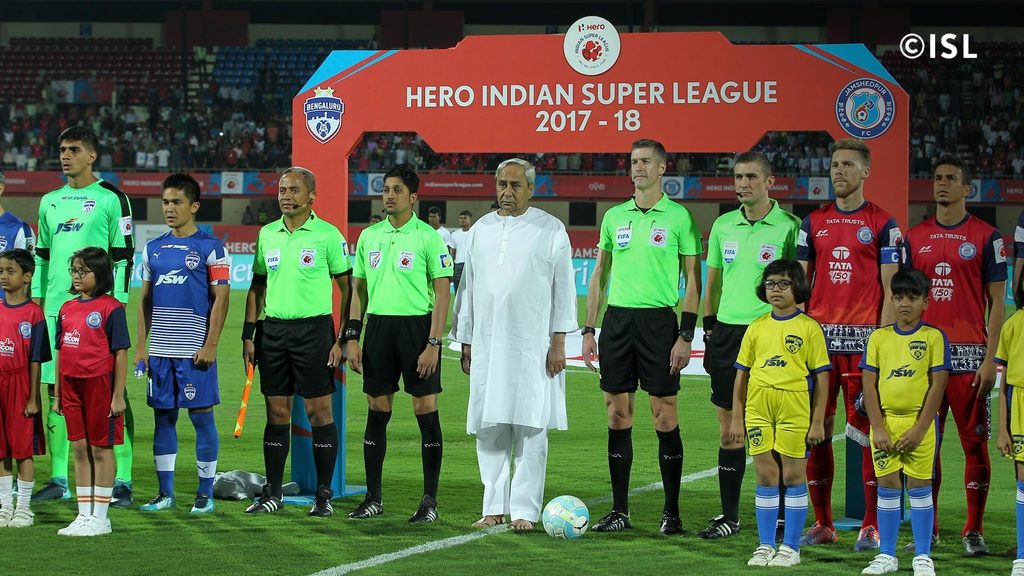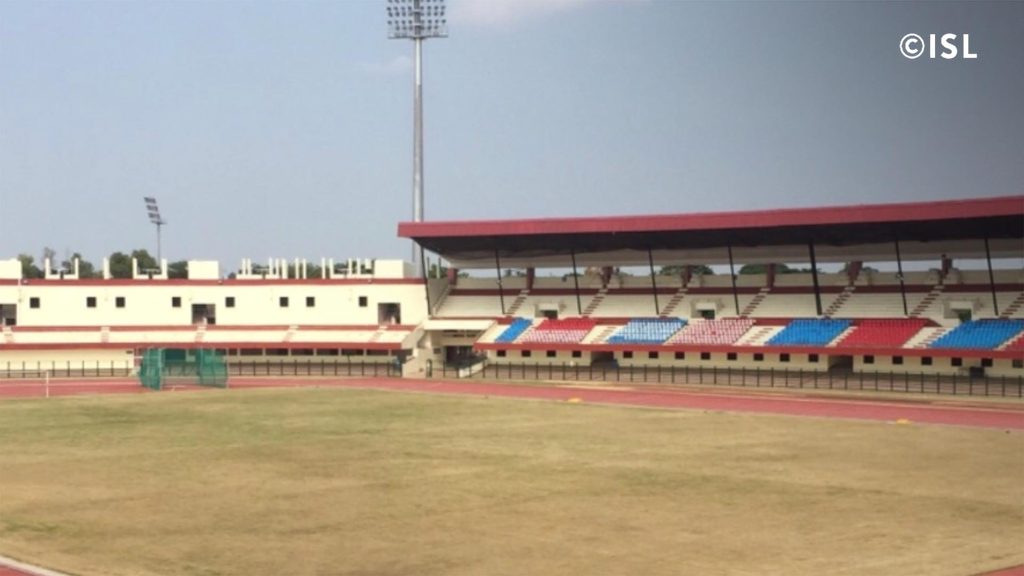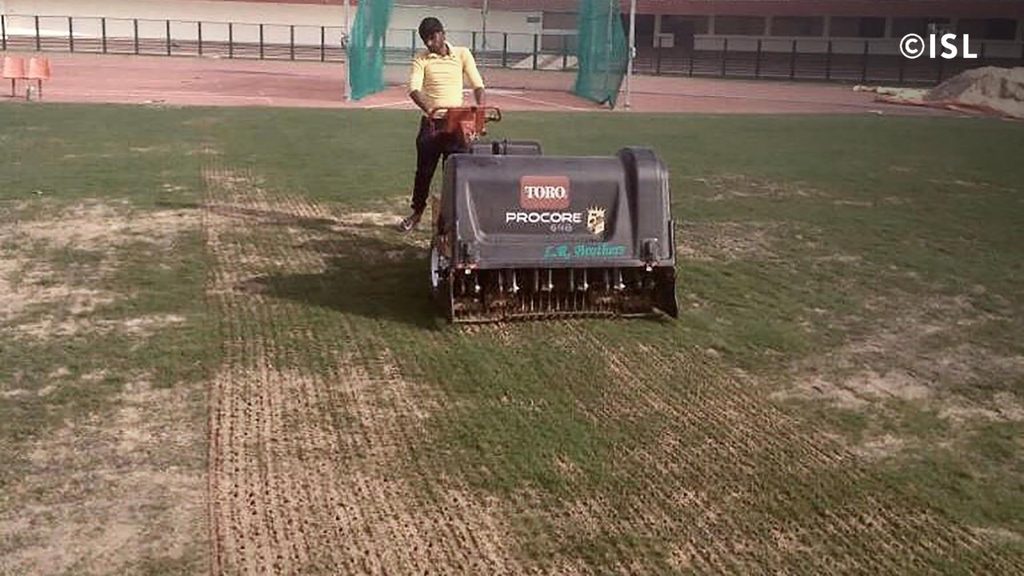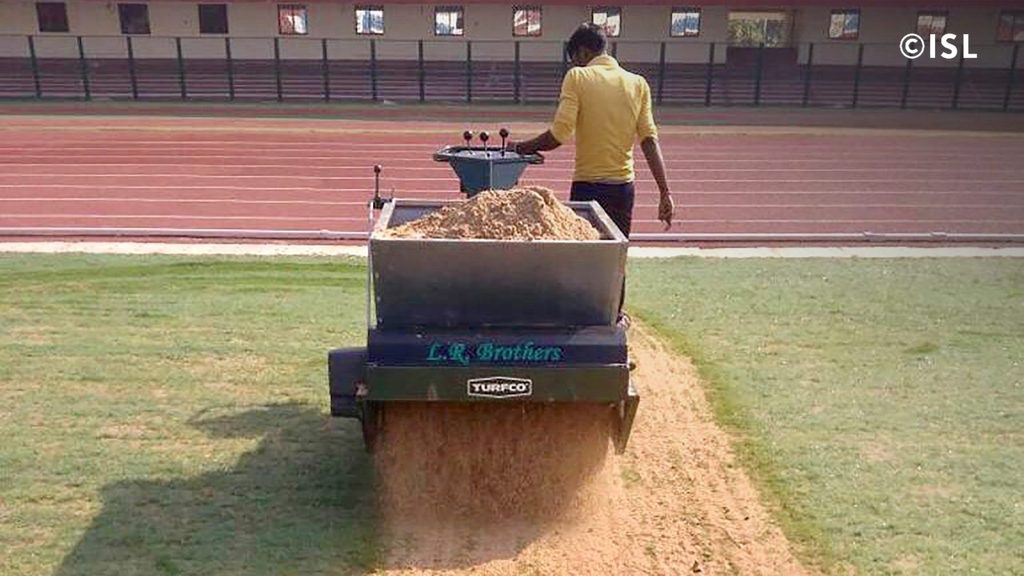Extra Time with Leeza Mangaldas
On Sunday, Odisha proudly played host to its first ever Hero Indian Super League (ISL) match at the Kalinga Stadium in Bhubaneswar.

Follow pitch-side reporter Leeza Mangaldas as she takes you behind the scenes this Hero ISL season. New posts every week exclusively on indiansuperleague.com. Connect with Leeza on Instagram or Twitter at @leezamangaldas.
Bhubaneswar hosts its first ever Hero ISL Match: What it takes to set up a new venue!
On Sunday, Odisha proudly played host to its first ever Hero Indian Super League (ISL) match at the Kalinga Stadium in Bhubaneswar. Youth and Sports Affairs have recently become a major priority for the state – and because Tata Steel has a significant presence there, Jamshedpur FC was invited by the Odisha government to play a “home” game there.
But setting up an entirely new venue in a short span of time is no mean feat. I was in Bhubaneswar for the match, and extremely impressed with what they managed to achieve – so I spoke with several people involved in organising the match to find out what it takes to get a stadium ISL-ready, as well as more about Odisha’s new passion for sports.
 At the Kalinga Stadium
At the Kalinga Stadium The Kalinga Stadium complex has previously played host to the Asian Athletics Championship as well as several Hockey India League matches and is even getting set to host the Men’s Hockey World Cup next year. But since it hadn’t yet hosted any major football events, when the club and the league accepted the state’s invitation, its ground had to be revamped to meet ISL standards in a short span of just around two months.
“Organising the Hero ISL match in Bhubaneswar was both a challenge and an opportunity,” explained Rochak Langer, Project Manager, Hero ISL. “It was a challenge because this was a one-off match in the middle of the season, and we had to start from scratch to get the venue up and running. It was an opportunity as the Hero ISL made its debut in a new state, and nationwide promotion of the sport has long been our aim – it could not have been possible without the support the government provided to Jamshedpur FC and the league. All stakeholders worked extremely hard, so hats off to them for pulling this match off.”
Ahead of the match, I also happened to meet Vishal Kumar Dev, Commissioner and Secretary, Sports and Youth Services Department, Government of Odisha. “It’s an absolute delight for us to be hosting this match,” he said. “Football is the world’s most popular game. India is catching on to football, and so is Odisha.”
 With Vishal Dev and Rochak Langer
With Vishal Dev and Rochak Langer Rakesh Oram became the first player from Odisha to play for the ISL last year, and the Indian women’s football team has been captained by not one but two women from Odisha – Sashmita Malik and Shradhanjali Samantaray.
“Football is a major priority for us and we are proud that we have already seen youth from Odisha excel at football,” he said. “Which is why we are thrilled to now be hosting an ISL match here.”
Dev also shared that the state has allocated a significant budget of “around Rs 400 crore” to facilitate sports achievement at the highest level starting with programmes from the grassroots up. Odisha already has “16 sports hostels with 1250 athletes in 11 disciplines, under the training of 80 coaches,” he shared – numbers which are all set to increase in the future.
Odisha is also the only state to own its own hockey team, the Kalinga Lancers – and the hockey facility within the Kalinga Stadium complex is among the best in the country.
“We are very happy with how the stadium has been set up for this match and we hope to have many more matches here in the long run,” said Mr. Dev before heading back to the stands in time for kick-off.
Odisha Chief Minister Naveen Patnaik and the Sports Minister Chandra Sarathi Behera were also in attendance, much to the pride and excitement of the fans.
 Odisha CM Naveen Patnaik with the players during the national anthem
Odisha CM Naveen Patnaik with the players during the national anthem Given the prior condition of the pitch, the attendance expected, and the security requirements at the match, the stadium infrastructure – the turf, the stands, and the hospitality areas – needed significant refurbishment in preparation for the match.
The ground was initially “very hard and undulated,” explained Salil Khandeparkar, AGM, Football, IMG Reliance, who oversees stadiums and infrastructure across all ISL venues. “It needed to be made softer and more even to provide adequate traction for the players’ footing,” he shared.
Salil showed me before and after photos of the pitch that perfectly illustrate what he meant:
 The Kalinga Stadium pitch before being revamped for the ISL fixture
The Kalinga Stadium pitch before being revamped for the ISL fixture The Kalinga Stadium pitch on 25th Feb, ahead of JFC v BFC
The Kalinga Stadium pitch on 25th Feb, ahead of JFC v BFCI found the transformation remarkable and wanted to learn more, so I asked him to explain what had to be done to the grass and soil to achieve match-ready turf. “Work began as soon as it was confirmed that Odisha would be hosting a match,” he explained, before running me through each stage of the process:
First, the existing grass was cut to zero level so that only the roots remain. Next, holes were punched into the surface for aeration.


The holes were then filled with sand with a special machine that allows even application, called a top dresser.


This process was repeated several times till the ground was as soft and as uniform as possible in its surface texture and grass cover and the existing grass profile was also improved.
Another fun fact I learned from Salil: the variety of grass typically used on football pitches in India is called “Bermuda” – a warm weather grass. That’s the grass you see gleaming bright green in the “after” photo.
In addition to the quality of the turf, “from player locker rooms to medical rooms to the spectator experience, from facilities for the media to broadcast facilities – we had to revamp every aspect of the stadium facilities,” shared Rahul Singh, General Manager, Events, IMG Reliance. “The government of Odisha and Jamshedpur FC did a fantastic job ensuring all ISL requirements were met.”
Given the fact that it was the first time ever that an ISL match was taking place in Odisha, a strong attendance from the Odisha government was expected, as well as from the league’s sponsors and stakeholders. So, several hospitality areas were required to be set up as well.
“We have created six hospitality areas in one stadium for one match and that is a first in all four years of the ISL,” shared Kanika Sethi Babbar, Head of Hospitality, ISL.
“Hospitality is a very sensitive area – it is the face of a game as it comprises of very important guests of the club, league and government officials involved. An ISL game is a very big deal for Bhubaneswar and also extremely relevant since the state is investing a lot in sports development overall. Hence this game meant marking the beginning of a possible football movement,” she continued.

With the ISL’s two newest teams coming face to face in a new venue, the fans in Bhubaneswar were all set for a cracker.
Despite Jamshedpur’s 21 shots, it wasn’t their day, and Bengaluru FC, who have been exceptional all season, won the match 2-0, with a goal each from Miku and Sunil Chhetri, much to the delight of the away fans that attended the match.
Nonetheless, JFC were very pleased to have had the opportunity to play in Bhubaneswar.
“The overall experience was great; we are thankful to the Bhubaneswar fans who turned out in large numbers to cheer the teams,” said Mukul Choudhary, CEO, Jamshedpur FC. “I think with this kind of following, and the great infrastructure and support of the Government of Odisha, the state can possibly have its own team, which the city seems to be ready for.”
For football in Odisha, the future does indeed look bright.

























